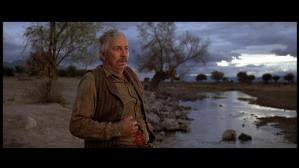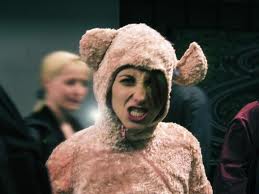You know my name but who are you? Just another American who saw too many movies as a child?
-Hans Gruber
Growing up with American cinema, I believed that World War II was won by John Wayne and Audie Murphy with a little help from the Brits. I also believed Rambo beat Vietnam. It wasn't until college that I had the opportunity to get a more unfiltered view of history, more specifically, the huge role the Soviet Republics played in WWII. Further, it wasn't until recently I began to look into pre-glasnost Russian cinema for the first time. The few films I've seen thus far have been very impressive, the latest of which is the Criterion release, Ballad of a Soldier.
Synopsis - After an act of heroism, a young Russian soldier is granted leave to go home and see his mother.
Ballad of a Soldier is kind of the flip side to Elem Klimov's Come and See. Where that film was a darkly nihilistic story of a young partisan's soul-crushing journey through the hellish aspects of the eastern front war, Ballad of a Soldier is a much more positive, yet equally moving WWII tale. Directed and co-written by Grigori Chukhrai, the film is simple and straightforward in it's storytelling but still emotionally deep, engaging and authentic. It avoids the usual sentimentality and propaganda that war films are often prone to and stays focused on the extremely likable main character. The people he meets along the way give a subtle testimony to the foolish wastefulness of war.
Chukhrai rolled the dice with a young, relatively inexperienced actor named Vladimir Ivashov, and cast him as Private Alyosha Skvortsov. Ivashov plays the young soldier in such an open faced, innocent and sincere way, that it's impossible not to immediately become charmed by him. Zhanna Prokhorenko, who plays a young peasant girl named Shura, is similarly winning. Her large, expressive eyes seem taylor made for emoting. These two engaging characters account for a great deal of the story line and are the heart and soul of the film.
Without a doubt, the black and white cinematography by Vladimir Nikolayev and Era Savelyeva is the strongest component of the film. Shot after shot look like beautiful old-time picture postcards and the movie looks great whether it's featuring a bombed out landscape, a locomotive weaving its way through the countryside or a shy couple staring longingly at each other. In one of the most well-conceived and composed shots of the film, the couple stand across from each other in the open door of a moving box car, the girl's windblown hair gently tracing the boy's face like tiny fingers. Often times, I'd admire a shot so much that I'd have to rewind to read the subtitles of what the characters just said.
Lastly, the original music by Mikhail Ziv avoids the usual war movie cliches of thunderous, brass heavy, marching numbers and manages to convey mood without being obtrusive or maudlin. It's not a great soundtrack, but quite restrained especially when compared to American and English WWII films.
To call Ballad of a Soldier a war film is actually kind of a misnomer. There's only one, small, brief battle scene in the beginning, and then the movie shifts away from the front, but it still manages to subtly show there's a war going on through characters and landscape. It's actually an anti-war film but without all the hair-pulling, self righteous preachiness that often accompany films of that genre. By showing the effects of war on characters that are not active participants, the film makes a quiet, clever and strong statement about its effects both express and implied. If you want to watch a film about the horrors of war, watch Come and See, if you want to watch a film about the heartbreaks of war, watch Ballad of a Soldier.
Score 9/10

















































